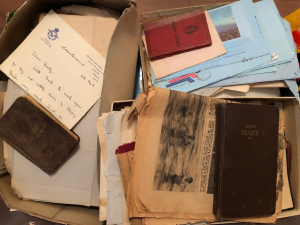
When I became Editor-in-Chief at NEHGS in June 2013, one of the new initiatives Ryan Woods and I discussed was a blog for the Society. Current and former colleagues worked with me to establish the blog’s purpose and name, and – in time – got me set up on WordPress. (Two years later, when I was on a sabbatical, three current and former colleagues managed the blog in my absence.) So Vita Brevis has been a cooperative venture from the beginning, relying on the energy and commitment of the NEHGS staff and some dedicated outside contributors to produce fresh content. Continue reading Vita Brevis turns five








